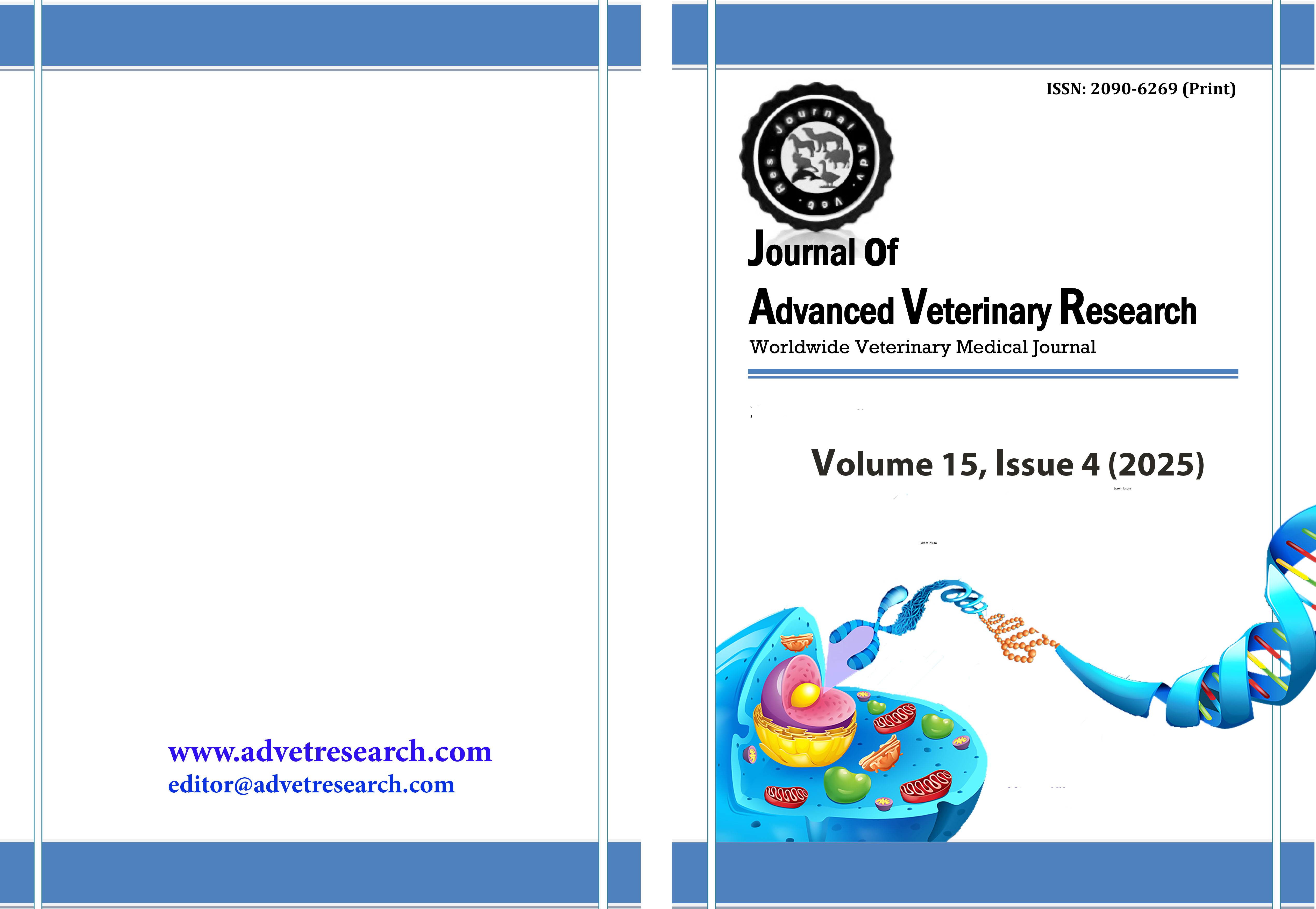The expression pattern of the vitamin D receptor gene (VDR) and the related cytokine response in horses with allergic dermatitis
Keywords:
Skin atopy, Equine, IL-1β, TNF-α, Vitamin DAbstract
Allergic dermatitis in horses is a prevalent clinical issue due to food allergy or insect bites and stings. The purpose of this research was to assess the correlation of the Vitamin D Receptor (VDR) gene and cytokines in horses suffering from allergic dermatitis. Forty horses diagnosed with allergic dermatitis and five clinically healthy horses were investigated. Serum concentration of tumor necrosis factor alpha (TNF-α) and interleukin-1β (IL-1β) was evaluated, and real-time PCR was conducted for relative quantitation of the mRNA expression level of the VDR gene in the blood samples of the horses. The horses with allergic dermatitis presented with pruritus, scabbing, alopecia confined to the lesion site, anxiety, and redness of the skin clinically. There was considerable elevation in IL-1β (p < 0.01) and TNF (p < 0.01) levels in horses with allergic dermatitis relative to clinically healthy horses. However, expression of the VDR gene was reduced (p < 0.001) considerably in horses with allergic dermatitis relative to controls. There was considerable correlation of IL-1β with TNF-α levels (r =, p = 0.001). Conversely, a negative correlation was noted between VDR expression and levels of IL-1β and TNF-α. In conclusion, the findings in this study show that the VDR gene has a critical role to play in the context of allergic dermatitis in horses. More research needs to be conducted on the possibility of vitamin D as a preventative treatment for allergic dermatitis in clinical practice.
Downloads
Published
How to Cite
Issue
Section
License
Copyright (c) 2025 Journal of Advanced Veterinary Research

This work is licensed under a Creative Commons Attribution-NonCommercial-NoDerivatives 4.0 International License.
Users have the right to read, download, copy, distribute, print, search, or link to the full texts of articles under the following conditions: Creative Commons Attribution-NonCommercial-NoDerivatives 4.0 International (CC BY-NC-ND 4.0).
Attribution-NonCommercial-NoDerivs
CC BY-NC-ND
This work is licensed under a Creative Commons Attribution-NonCommercial-NoDerivatives 4.0 International (CC BY-NC-ND 4.0) license




